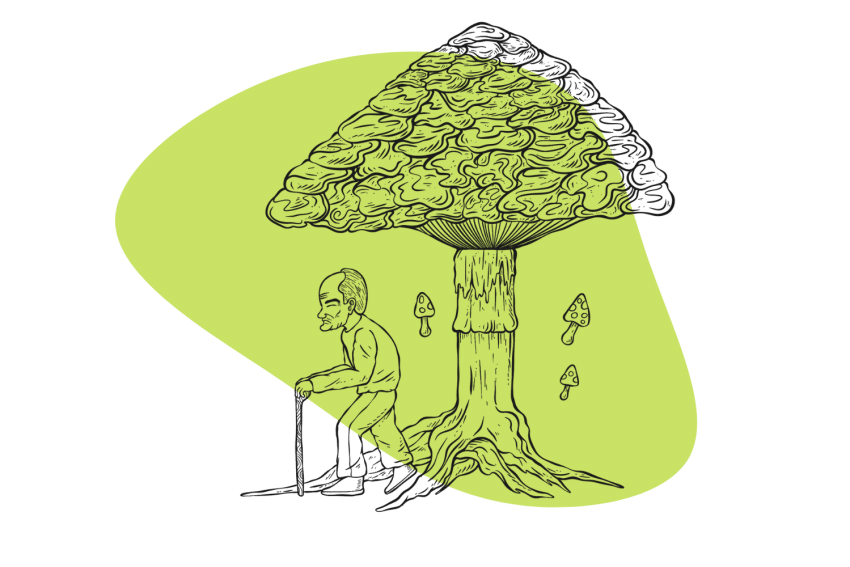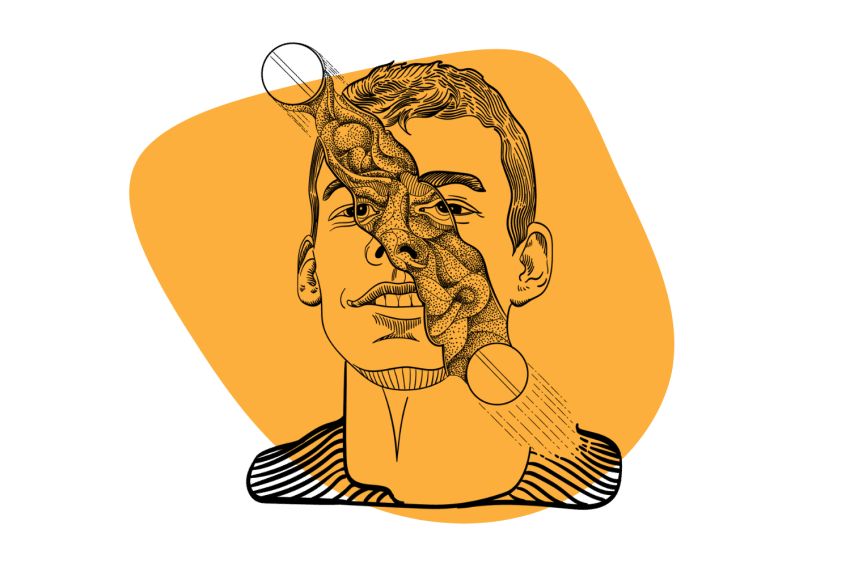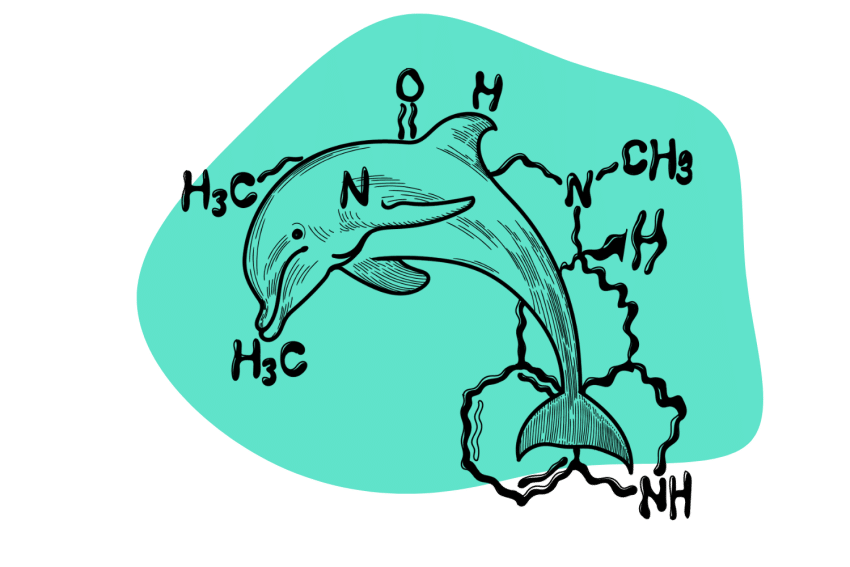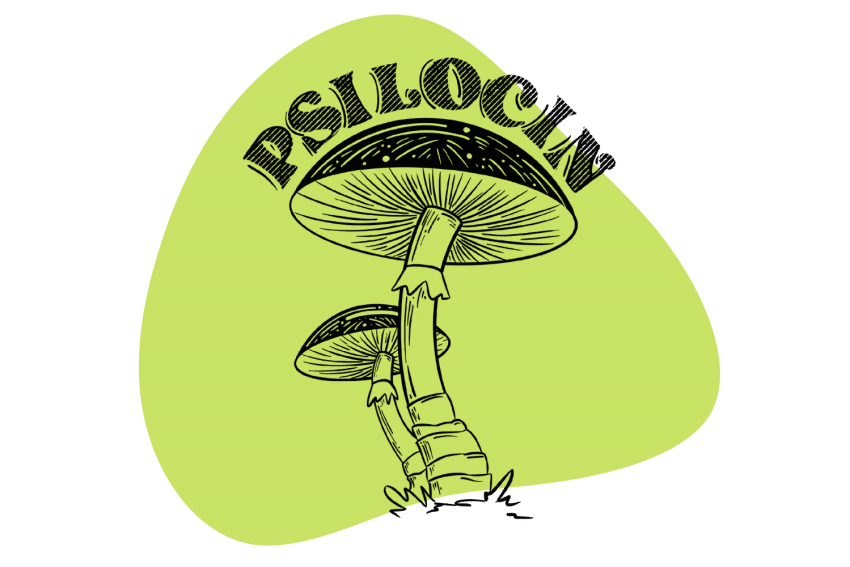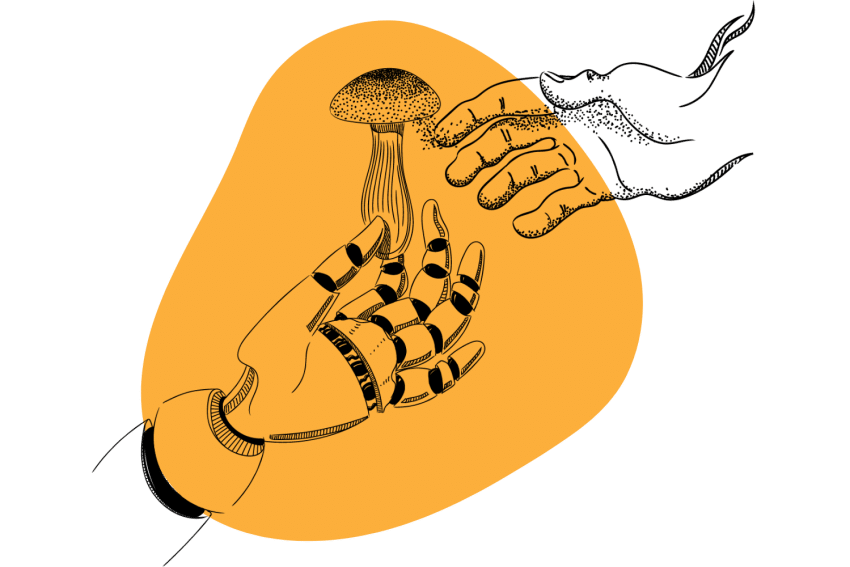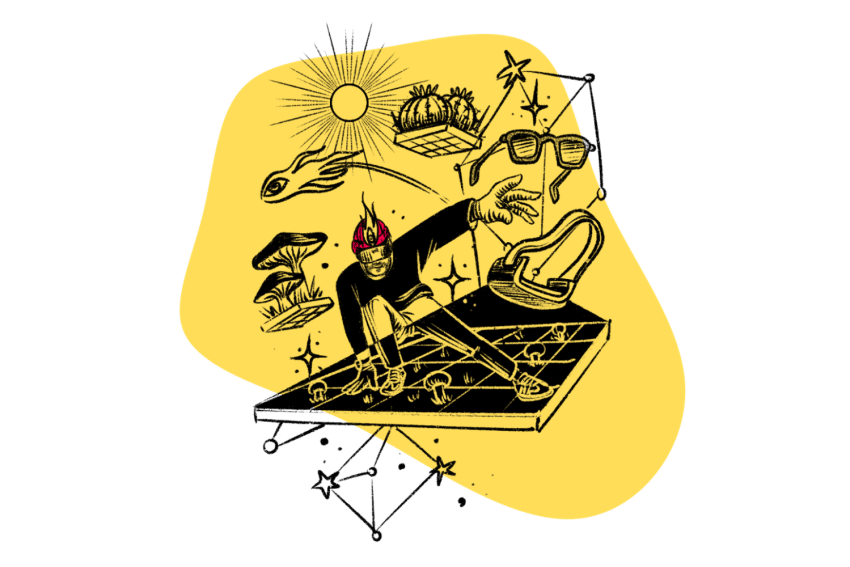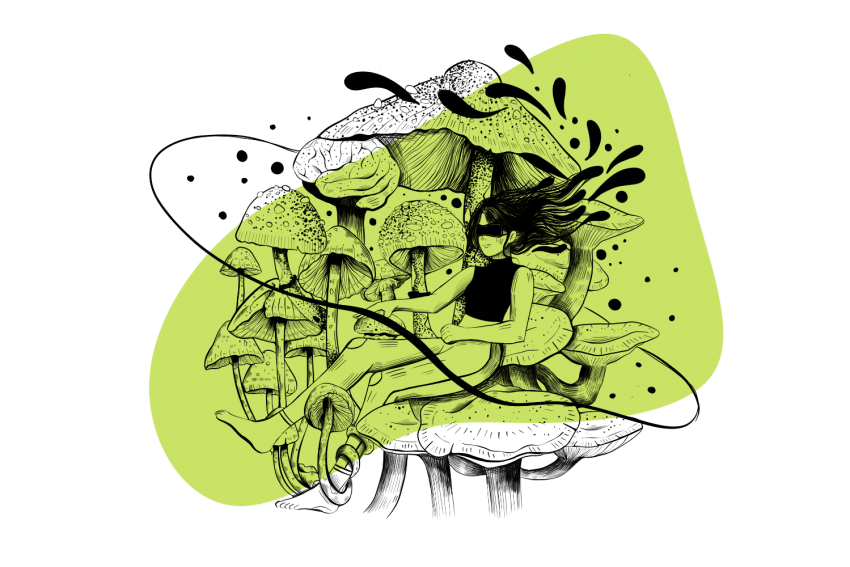Psychedelics & Virtual Reality: A Chat With Zeus Tipado
We reached out to Zeus Tipado, the only person (along with his team) in the world researching the effects of VR and psychedelics on the brain.
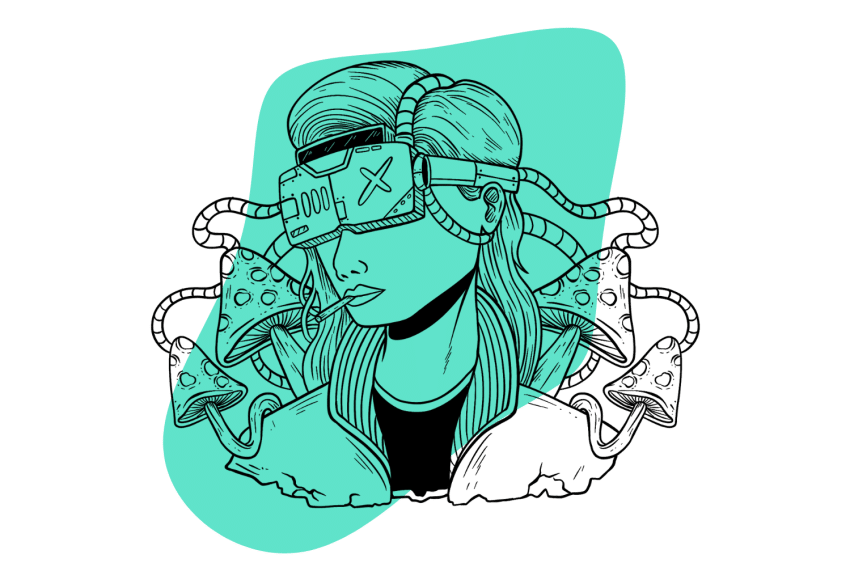
Virtual reality (VR) has quickly emerged from the depths of science fiction into our realm of being. While VR has been around for a while, we have recently gotten to nearly lifelike capabilities with our programming and continue to push the boundaries on what we can replicate.
For the sake of this article, we’re using VR as an umbrella term for a few different technologies available today. The main options include:
- Virtual Reality (VR) — Usually at least involving a screen over the participant’s entire field of vision, often along with noise-canceling headphones.
- Augmented Reality (AR) — Unlike VR, AR doesn’t obscure your line of vision but, rather, adds to it. Think of furniture sellers who offer apps where you can view how the couch would look in your living room by pointing your camera at the location you’d want it.
- Extended Reality (XR) — XR systems incorporate VR along with noise-canceling headphones and modes of interaction. This may involve a moving platform so you can “walk” through your environment, haptic feedback (vibrations) to accompany your interactions within the virtual environment and more.
Recently, I had the opportunity to sit down with a true authority on the topic, Zeus Tipado (@tipado). Tipado and his team at Maastricht University are studying the effects of dimethyltryptamine (DMT) combined with VR/XR on the brain.
Here’s what he had to say on the topic.

Zeus Tipado On Solving Psychedelic Riddles With VR At Maastricht University
For the most part, psychedelics and VR have existed within a theoretical framework. While actual research is scarce, scientists have released conceptual articles on:
- Using VR as a moderator of the psychedelic experience [1]
- Parallels between VR and tripping [2]
- Using group VR sessions as a replacement for psychedelics [3]
- The potential power of pairing psychedelics and VR based on a systematic review of promising studies on each for similar concerns [4]
As of yet, none of these have extensive research behind them, and — despite the excitement laid out in conceptual studies — very little is currently underway investigating the pairing.
However, Zeus Tipado — a doctoral candidate at Maastricht University in the Netherlands — and his team are seeking to change that.
“I’m the only person in the world administering DMT and VR in a clinical study,” he recently said to me. Adding, “It’s big!”
To do this, participants take a dose of DMT while using an XR setup Tipado’s team created while connected to Functional Near-Infrared Spectroscopy (fNIRS) brain scans. The non-invasive technique uses protons to detect changes in the brain and pinpoint specific activities as they happen.
Here, he’ll explain it to you better than I could:
Unlike other methods of scanning activity in the brain, fNIRS fits comfortably over the participant’s head, allowing for movement and leaving space for a VR headset. The short action of DMT helps ensure participants aren’t overextending their time in the virtual world and provides fast feedback on results.
Maastricht University Research on DMT & VR
When I asked Tipado what his team was looking into, he told me he couldn’t share specifics, but there were many elements they were looking into.
There’s a lot that I can’t discuss until some papers and studies I’m doing at Maastricht University get published. However, I can mention that my line of research has never been conducted before, and I’m pretty excited to reveal to the world my findings.
Tipado would only say it was partially about “the utility of XR as a modulator of the DMT experience.” Additionally, he added they were looking at “the fundamental nature of how and, more importantly, why we trip.”
DMT is especially useful in this sense since it “guarantees a visual experience if the correct dosage is administered.” The visual experience it provides characteristically overtakes the worlds around users.
“We’re not just talking about floors changing colors, but entire environments melting away and being replaced with new ones. In a sense, DMT is virtual reality – but just condensed into a small pile of crystals.”
While he isn’t looking into how this changes with other substances yet, Tipado did state a desire to do the same for one other drug — Salvia divinorum. “Its effects are absolutely mind-bending and reality-defining. Also, this monumental experience is short-lived, just like DMT.”
Zeus Tipado’s Interest in Psychedelics & Virtual Reality
One experience Tipado classifies as an “absolutely a catalyzing moment” for his interest in psychedelics and VR was the 2017 E3 convention. It was here — “at the time, the largest video game expo in the world” — Tipado took 4–5g of magic mushrooms and went to a “shamanic virtual reality” exhibit during his peak.
“The VR world I was in was cavernous, filled with giant glowing mushrooms,” he told me. “When I left the cave I saw a perpetually-shifting mandala hanging in the sky like a celestial body. It was suspended above a calm lake at a point that appeared to be midnight.”
While he refers to this experience as “incredible,” Tipado has a long history of psychedelics and technology. “In fact, my master’s thesis at the University of South Wales was on how technology can innervate the psychedelic experience.”
During his undergraduate studies at the University of Arizona, Tipado discovered the ethnobotanist and prolific psychedelic pioneer Terence McKenna. He promptly “illegally downloaded as many .mp3s” as he could get his hands on.
McKenna spoke extensively about technology and psychedelics, but Tipado particularly remembers a specific moment from his 7-hour lecture, “History Ends in Green.” The section he’s referring to starts about 2 hours and 8 minutes in.
McKenna brings up the idea of incorporating VR into psychedelics. He even discusses a study design in which he uses VR and software to detect language spoken while in VR. Colorful geometric objects would then be displayed to the person within this VR world based on what specifically is being said.
What Potential Is There For Psychedelics and VR?
While Tipado and his team are the only ones studying the brain during a trip on VR, others have considered the possibility of the combination in various ways.
The main potential options out there for utilizing VR/XR in psychedelic-assisted psychotherapy include the following:
- Standardizing Setting — Your setting is one of the biggest factors in determining how enjoyable and beneficial your trip is. VR and XR can create reliably comfortable settings and ensure they’re consistently enjoyable.
- Unique Settings — Tripping in a dark room without any noise is cool, but what if you could play relaxing music while floating through the galaxy instead? VR and XR settings offer the potential to explore unlimited possibilities with our imagination as the only limiting factor.
- Virtual Reality Retreats — Drug tourism is often harmful to indigenous cultures and the plants people are traveling to consume. There’s a time and place for dedicated ethnobotanical research, but through VR and XR, we can recreate these environments and open them to the public in ways that don’t destroy them.
- Improving Mindset — While VR doesn’t directly change your mindset, several studies have found it effective for anxiety, depression, and other potential concerns. There is potential for VR and XR programs to create consistently beneficial activities and settings to brighten a person’s mindset.
- Virtual Reality and Trip Preparation — Applications could help set the tone for what people can expect when they go on their psychedelic journey. While we’ve never had a good way to explain the effects of psychedelics, maybe we can show them instead.
This is not an exhaustive list by any means, and several other possibilities are out there. As time goes on and our grasp on this technology grows, it’s likely more potential benefits will emerge.
1. Standardizing Settings in Psychedelics With VR
Standardizing settings to help improve trips is one of the biggest potential impacts virtual reality could have on psychedelics [1].
“I believe the setting has more influence on a psychedelic experience than the psychedelic itself,” Tipado recently told me. “As we’ve seen with placebo research, non-pharmacological factors hold an immense influence on an individual. Things like the expectancy effect can definitely shift a psychedelic in a certain direction.”
Even without the addition of psychedelics, VR has already proven itself to improve a person’s outcome through a virtual setting.
One study involved two participants who had undergone amputative surgery and experienced phantom limb pain — the sensation of feeling pain in the location of a former limb. They found that hour-long sessions replicating movement in their lost limb could almost eliminate pain with each of the six sessions [5].
By interacting with their limbs virtually, participants reliably reduced their pain and discomfort.
(Ambron, E., Miller, et all (2018). Immersive low-cost virtual reality treatment for phantom limb pain: Evidence from two cases. Frontiers in neurology, 9, 67. Figure 3)
Furthermore, controlling this factor enables deeper research into what goes into a healthy setting for a trip which is crucial. As a recent study from Dr. Neşe Devenot called for, these factors need to stop being “relegated to footnotes and passing mentions [6].”
Without a transparent understanding of every element contributing to a trip, we can’t deduce what works best.
Another study demonstrates this by questioning the long-held, little-questioned notion that Western classical music was better for psychedelic experiences. Interestingly, they found their overtone-based playlist to have a slight preference for positive outcomes [7].
We’re only just beginning to examine this crucial element of the psychedelic experience, and VR could provide us the opportunity to do so with clinical precision.
2. Unique Settings for Psychedelic Trips Through VR
“The intriguing thing about XR is that a setting can be anything imaginable,” Tipado told me. Our gold standard of a clean and welcoming room may fly out the window when we can experience our trip floating through galaxies we invent ourselves.
Some psychedelic companies are trying to reinvent the psychedelic, trademark it, and call it their own. They think it’s the future, but it’s gonna get weirder than that. The future of psychedelics could be tripping *inside* VR (1/15) pic.twitter.com/UPvKSjvxZQ
— Zeus Tipado (@tipado) January 27, 2022
We often think of unique and interesting environments as being especially conducive to a trip, and now, we can make them whatever we want. Sure, you could take mescaline in the desert, ayahuasca in the jungle, or mushrooms among Mayan ruins, but you don’t need to limit yourself to earth or our reality at all.
You could create a program that helps you to walk through your own mind and interact with it as you try to incorporate the messages and themes of the trip. Imagine peaking on acid and pulling a file out of a cabinet in the interior of your mind, labeling it with a quality you might want more of, replicating it into 10,000 copies, and filling the room with it.
Or, if you’d rather, you could create an entire alien planet filled with wildlife waiting to interact with you. DMT entities can have the personality, voices, and understanding of all your favorite psychonautic heroes.
3. Virtual Psychedelic Retreats
“I expect XR settings will eventually overtake the psychedelic retreat model,” Tipado told me, adding, “It’s something I’m also heavily investigating in my research.” Since R. Gordon Wasson first betrayed the trust of Maria Sabina, tourists have flocked to shamanistic retreats abroad — often to the detriment of the communities they visit and the drugs they seek.
Through XR, psychonauts can experience the joy of a traditional ceremony without having to harm the environment they wish to explore. You can surround yourself with representations of people or elements you find joy in and control the group around you.
Or, perhaps, with a community of other real people joining virtually through their avatars. We’re already seeing the “metaverse” style conferences popping up — how long until this extends to psychedelic retreats?
4. Improving Your Mindset While Tripping With VR/XR
Improving your setting can go a long way in improving your mindset as well — and it doesn’t even have to involve very realistic graphics. One study used a VR program of a snowy landscape and cold environment during the painful operation of removing dead skin cells from burn wounds [8].
The game — Snow World — had greatly inferior graphics to what we can accomplish today. Yet, the cool environment VR immersed patients in succeeded in reducing the painful burn of their wound care.
Another study evaluated the stress — a common emotion during a psychedelic trip — of participants while they played a stress-based game through an XR setup. They found VR had “between above average and excellent” effects on stress [9].
In the game, participants go through challenges revolving around their heart rate and anxiety levels. An example in the study involves patients arriving at a gate they cannot open unless they locate the tools to lower their stress first.
VR could potentially assist with overcoming the onset of a psychedelic experience and the uncomfortable feelings it can bring. Participants could use programs and tools to process uncomfortable physical feelings and maintain a positive mindset throughout the trip.
5. VR for Trip Preparation
As Dr. Aday and his crew note in their 2020 study, psychedelic drugs have several parallels with each other. They state, “VR may be a useful tool for preparing hallucinogen-naïve participants in clinical trials for the sensory distortions experienced in psychedelic states [2].”
Both options have the capability of overwhelming our visual field and understanding of reality. As such, they can help empower new psychonauts to better understand the new perceptual distortions they will see.
While many elements of psychedelic trips can’t shine through in a VR program, there are several which can. Take a look at this simulation below of different dosage levels of DMT as an example of how a person might be capable of exploring components of the psychedelic experience they’ll have beforehand:
As this video shows, we have the means to recreate the visual stimuli of psychedelic drugs, even if we can’t force the feelings they bring on. VR could be a harm reduction measure for people wanting to use a drug for the first time.
Problems Around Researching Psychedelics and VR/XR
Today, the best way to get funding for research is to try researching a new drug or application thereof so you can secure years of patent rights. While there is some money to make in VR — hosts of companies are rushing to patent psychedelic VR apps — there isn’t enough to raise the eyebrows of many research funders.
Or, as Tipado put it:
A pill isn’t going to solve the overarching anxiety from constant gun violence. A tab of LSD isn’t going to solve cultural trauma. However, apparently, lots of investors believe that psychedelics are going to serve as a “cure-all” for society, and they’re throwing an enormous amount of funding at any lab or group of people that claim they have the answer in a commercially viable and marketable solution.
Finding funding for research with the only aim of scientific advancement is notoriously difficult. In another example, Tipado puts forth a plausible method for testing the idea of “shared trips” below, concluding a lack of funding will likely keep it from ever happening.
When people take DMT in a group, the idea of ‘shared trips’ is always a thing – experiencing the *same* DMT landscape together. It’s a wild concept (something that even I experienced), but in neuroscience, there’s no way to research this – unless we do a HYPERSCAN! (1/11) pic.twitter.com/PRHUA4c1Yd
— Zeus Tipado (@tipado) March 6, 2023
It’s incredibly hard to get funding for my line of research. It’s way less sexy to say, ‘I’m trying to understand the neurological mechanisms underlying a visual psychedelic experience’ than ‘shrooms can help you kick an alcohol addiction.’
It’s unfortunate because when I’m done with my research, I’m pretty confident I will be opening up a new pathway of psychedelic research that will yield products, services, and technology. However, investors don’t invest in the journey – just the destination.
Anyone can own a decent VR setup for under a one-time $500-or-under payment — that’s a big difference from a $5,000 psychedelic therapy session or $60 a month for medication.
Problems from Pairing VR & Psychedelics
Just as it’s false to think psychedelics are always safe, there are potential risks associated with VR as well. When combining the two, over-stimulation, cybersickness, and disorientation can turn a trip into a nightmare, even if you’re floating through cyber heaven [1].
Two of the biggest factors in this concern are overstimulation and the amount of time a person is exposing themselves to VR [10]. If you’re using DMT like the participants in Tipado’s study, you likely won’t be using VR for very long, but ensure you take regular breaks if you’re using a longer-acting psychedelic like LSD or magic mushrooms.
Regardless of the amount of time, you’re using VR while on psychedelics, take care not to overstimulate your senses. Drifting through space is nice enough; you don’t have to make the background full of shifting mandalas and exploding colors.
Overstimulation can make you feel overwhelmed and may even make you anxious or irritable. Remember, you’ll have plenty of visuals on your own; a VR environment should be relaxing, enjoyable, and conducive to a relaxing time.
Can VR Provide a Psychedelic Trip Without Drugs?
No, VR on its own cannot trigger a psychedelic experience, despite what some apps may say in their descriptions on the app store. However, VR could help prime a person for what to expect when they are tripping.
If people could experience the visual and auditory phenomena of a psychedelic trip before taking their drug of choice, it could help introduce them to the experience. It’s always been difficult to explain what happens when we trip, but maybe we could show people beforehand.
I’ll let Tipado speak more (and better) about this topic as well:
Conclusions: What’s Next for Psychedelics & VR?
Tipado just put out a call for participants in a survey he’s putting out on visuals associated with DMT. “It will be available to everyone on the planet (that has done DMT in all forms).”
If you’d like to participate, you can do so here. Tipado also teased a paper on “psychedelic vision” dropping sometime around the beginning of summer. He said it “will introduce a new neuromechanics of tripping that I believe has been overlooked in science.”
Finally, he stated, “I’m also working on a paper regarding XR and the combination of psychedelics and a study that I’m working on with a newly-released XR headset will be completed this year.”
This is the work of a single team with the hopes others might jump on. Currently, most of the movement in this niche space revolves around patents, app development, and other marketing ploys.
We simply do not know enough about the psychedelic experience, let alone psychedelic experiences modulated by any form of extended reality, to have an understanding of if and how this combination will assist in therapy. Especially trademarked therapy.
There needs to be a fundamental understanding of aspects of the psychedelic experience, like how it affects our ability to perceive, before we go down the rabbit hole of “psychedelics make everything better.” That is the primary focus of my research in psychedelics, XR/VR, and the brain.
As Tipado’s findings start coming to light, we’ll hope other researchers jump on this potentially valuable tool for the psychedelic experience.
References
- Sekula, A. D., Downey, L., & Puspanathan, P. (2022). Virtual Reality as a Moderator of Psychedelic-Assisted Psychotherapy. Frontiers in Psychology, 13. https://www.frontiersin.org/articles/10.3389/fpsyg.2022.813746
- Aday, J. S., Davoli, C. C., & Bloesch, E. K. (2020). Psychedelics and virtual reality: Parallels and applications. Therapeutic Advances in Psychopharmacology, 10, 2045125320948356. https://doi.org/10.1177/2045125320948356
- Group VR experiences can produce ego attenuation and connectedness comparable to psychedelics | Scientific Reports. (n.d.). Retrieved April 27, 2023, from https://www.nature.com/articles/s41598-022-12637-z
- Gómez-Busto, F. J., & Ortiz, M. I. (n.d.). Virtual Reality and Psychedelics for the Treatment of Psychiatric Disease: A Systematic Literature Review. Clinical Neuropsychiatry, 17(6), 365–380. https://doi.org/10.36131/cnfioritieditore20200606
- Ambron, E., Miller, A., Kuchenbecker, K. J., Buxbaum, L. J., & Coslett, H. B. (2018). Immersive Low-Cost Virtual Reality Treatment for Phantom Limb Pain: Evidence from Two Cases. Frontiers in Neurology, 9, 67. https://doi.org/10.3389/fneur.2018.00067
- Devenot, N., Seale-Feldman, A., Smith, E., Noorani, T., Garcia-Romeu, A., & Johnson, M. W. (2022). Psychedelic Identity Shift: A Critical Approach to Set And Setting. Kennedy Institute of Ethics Journal, 32(4), 359–399. https://doi.org/10.1353/ken.2022.0022
- Strickland, J. C., Garcia-Romeu, A., & Johnson, M. W. (2020). Set and Setting: A Randomized Study of Different Musical Genres in Supporting Psychedelic Therapy. ACS Pharmacology & Translational Science, 4(2), 472–478. https://doi.org/10.1021/acsptsci.0c00187
- Hoffman, H. G., Patterson, D. R., Seibel, E., Soltani, M., Jewett-Leahy, L., & Sharar, S. R. (2008). Virtual reality pain control during burn wound debridement in the hydrotank. The Clinical Journal of Pain, 24(4), 299–304. https://doi.org/10.1097/AJP.0b013e318164d2cc
- Maarsingh, B. M., Bos, J., Van Tuijn, C. F. J., & Renard, S. B. (2019). Changing Stress Mindset Through Stressjam: A Virtual Reality Game Using Biofeedback. Games For Health Journal, 8(5), 326–331. https://doi.org/10.1089/g4h.2018.0145
- Saredakis, D., Szpak, A., Birckhead, B., Keage, H. A. D., Rizzo, A., & Loetscher, T. (2020). Factors Associated With Virtual Reality Sickness in Head-Mounted Displays: A Systematic Review and Meta-Analysis. Frontiers in Human Neuroscience, 14. https://www.frontiersin.org/articles/10.3389/fnhum.2020.00096

